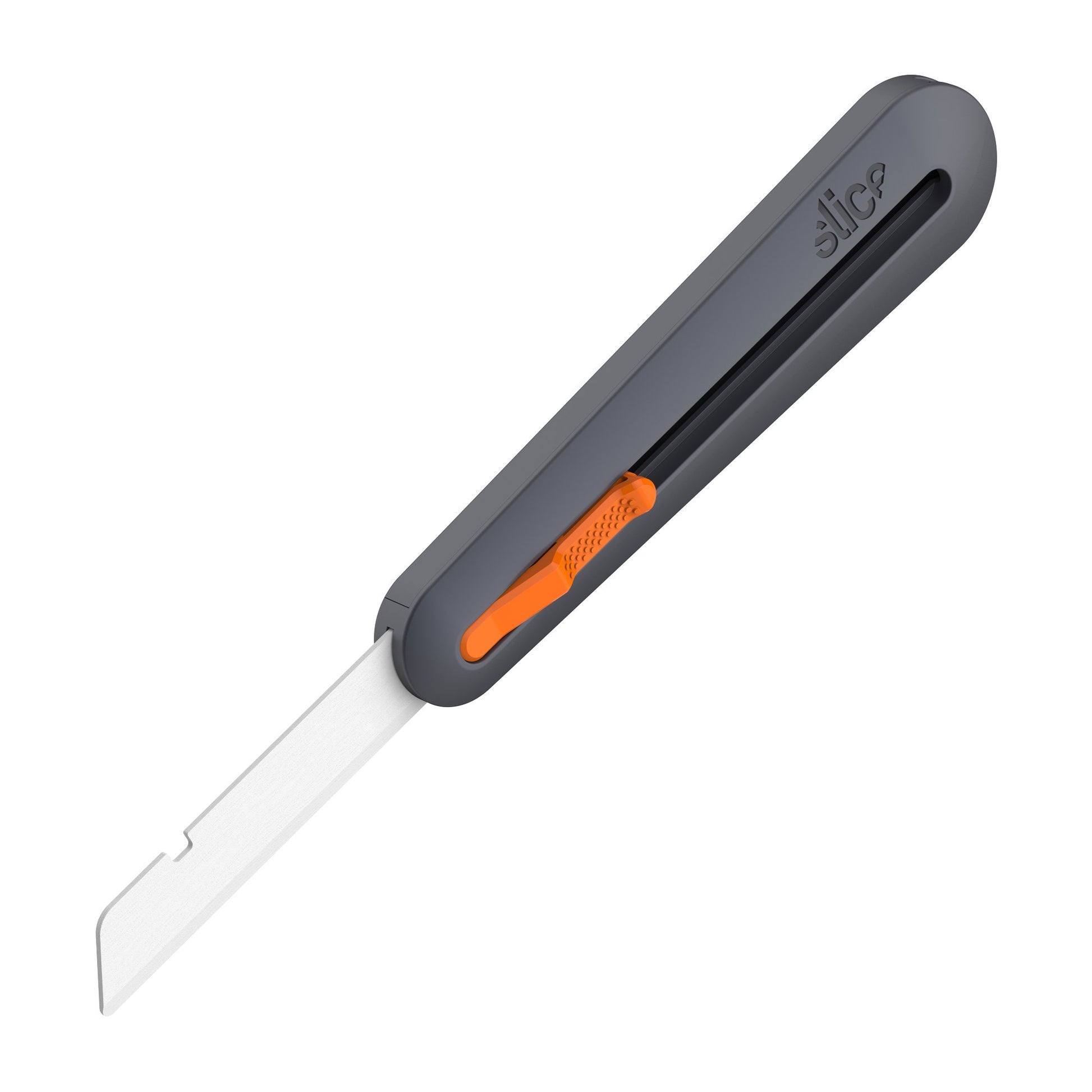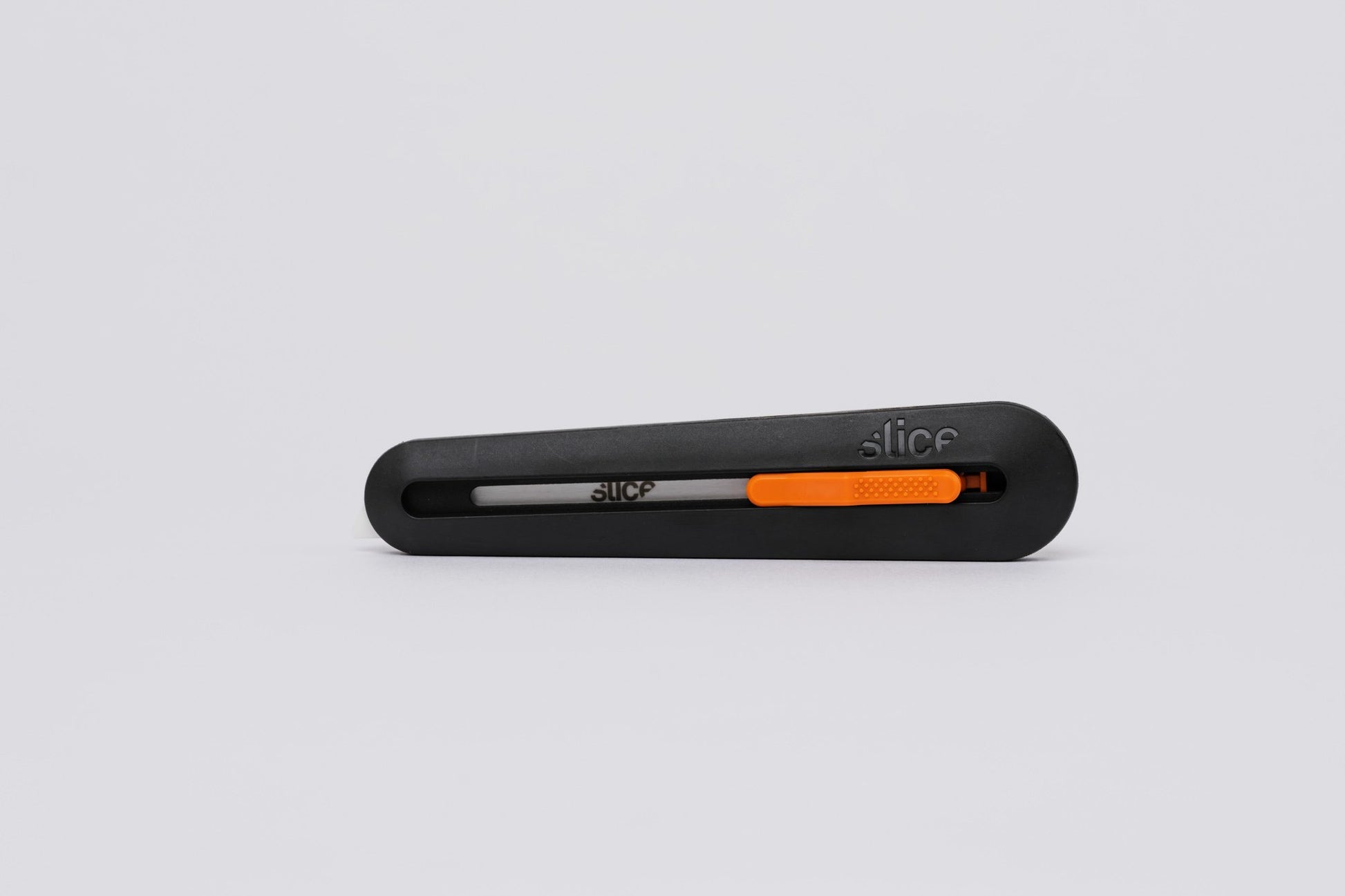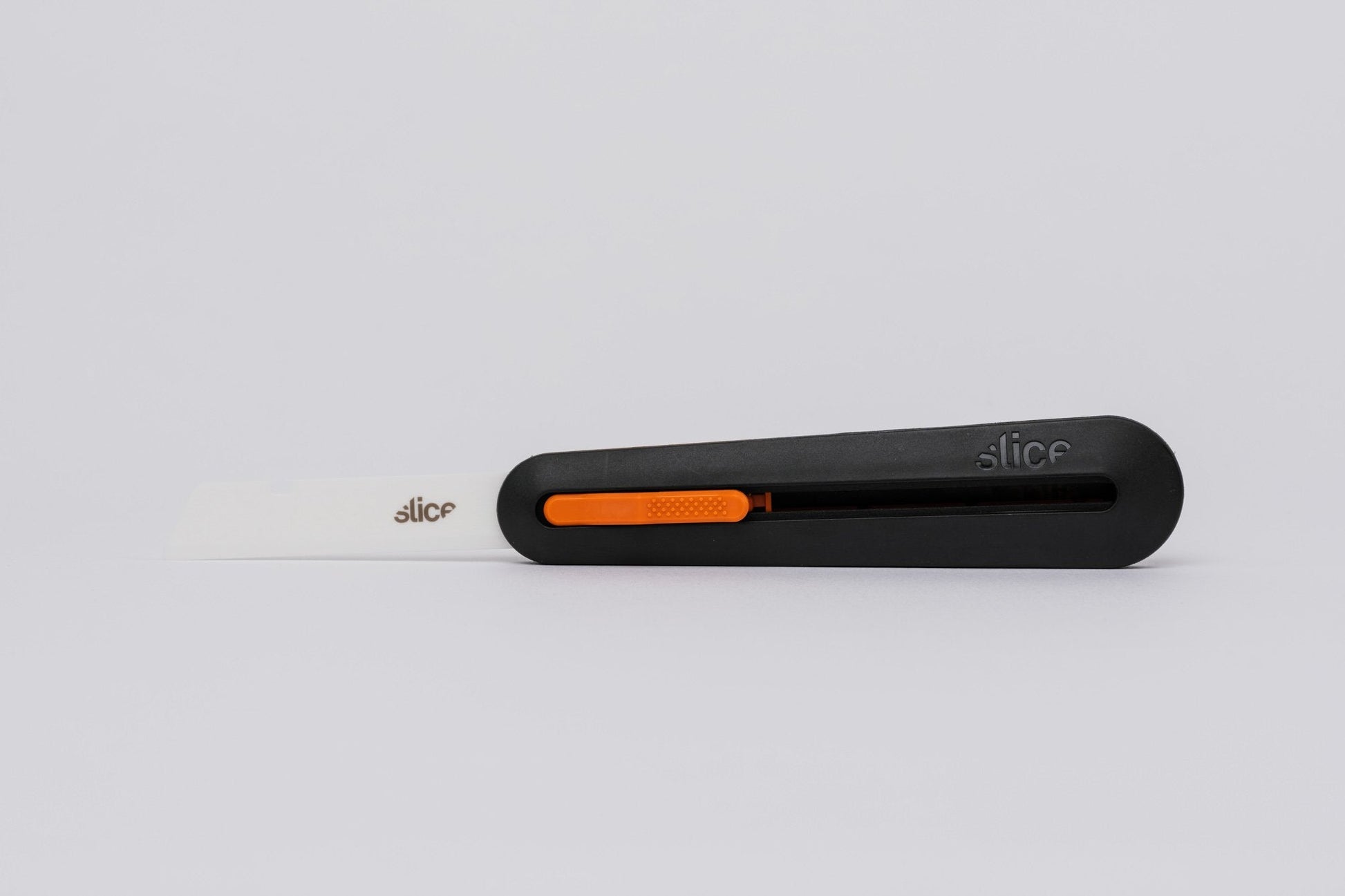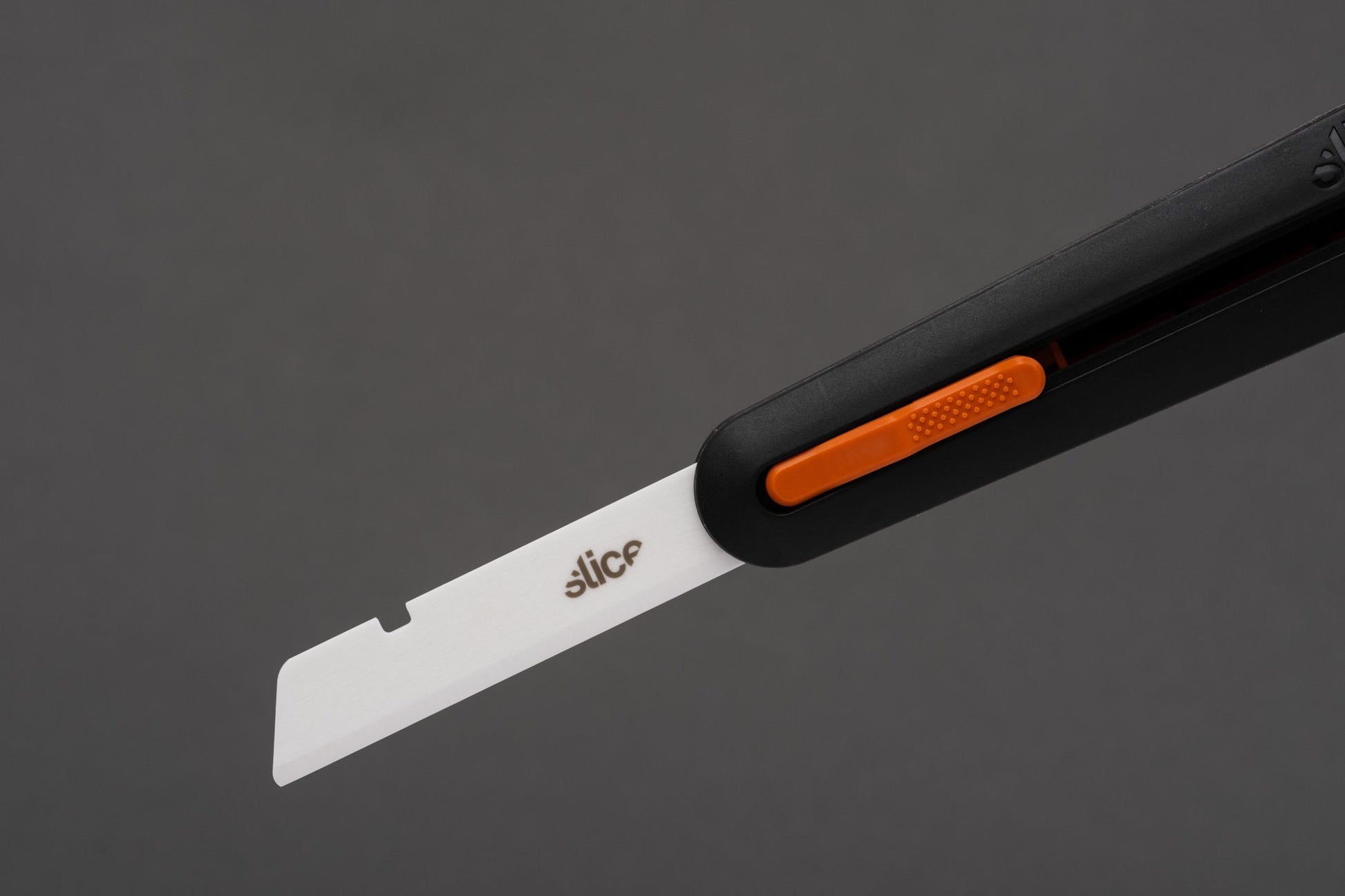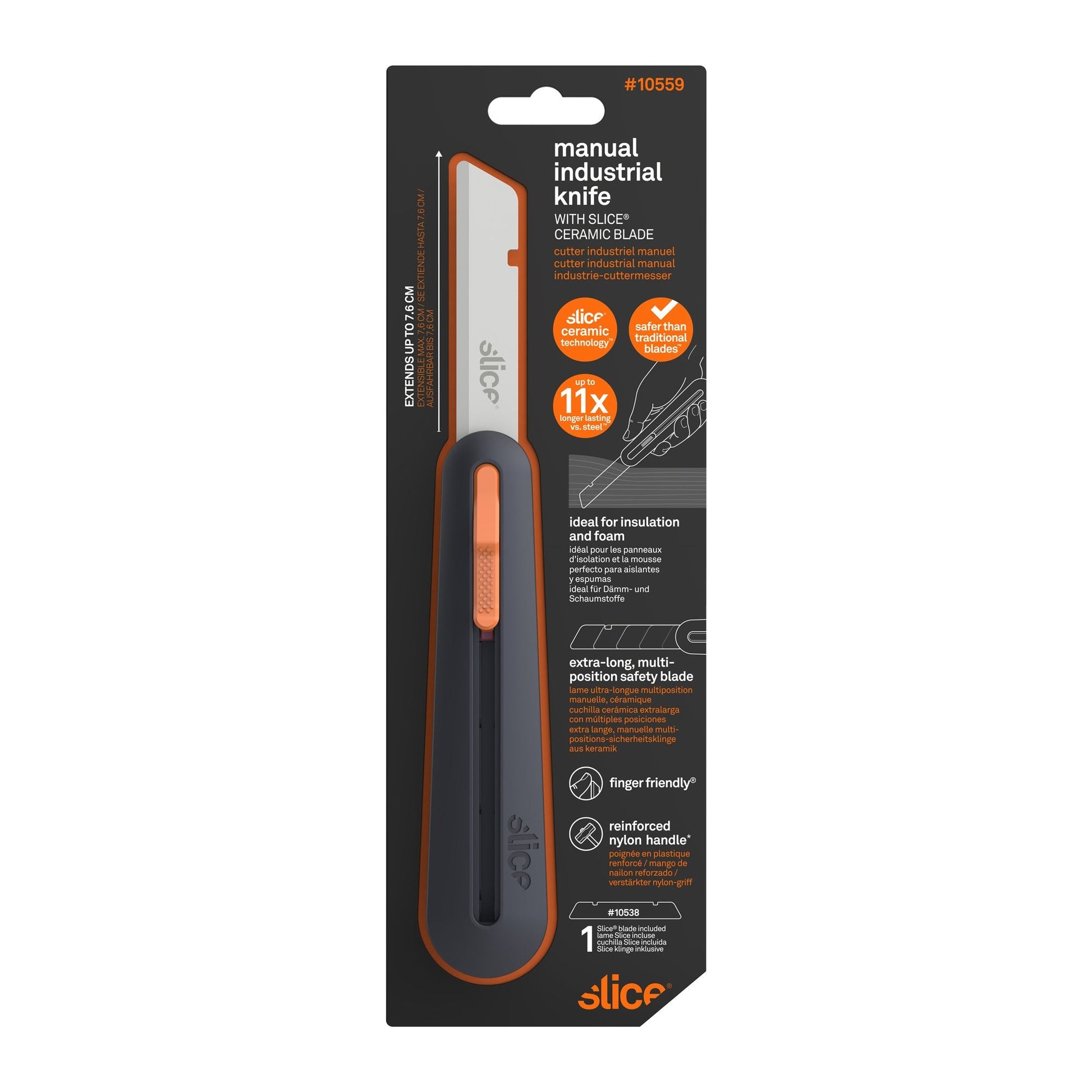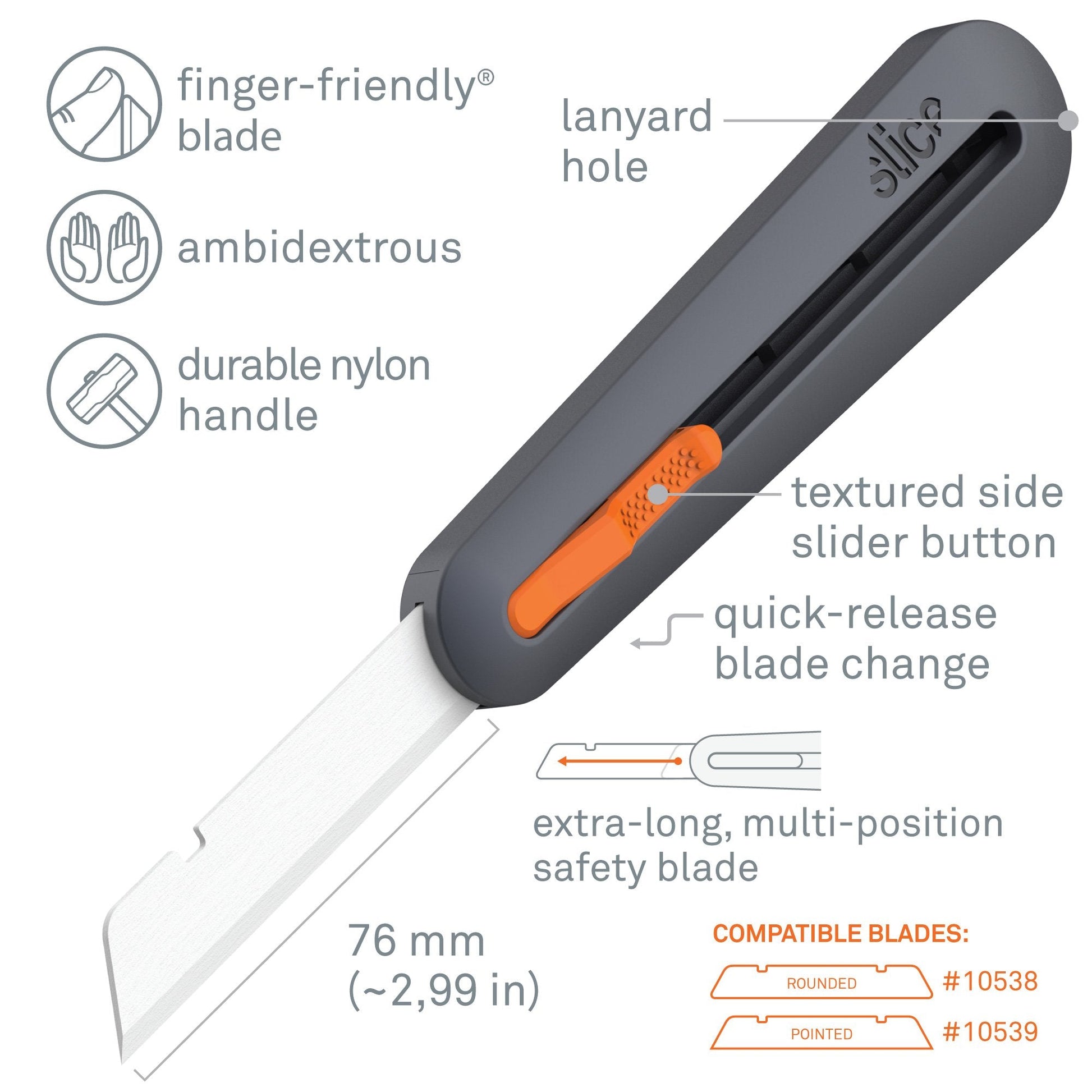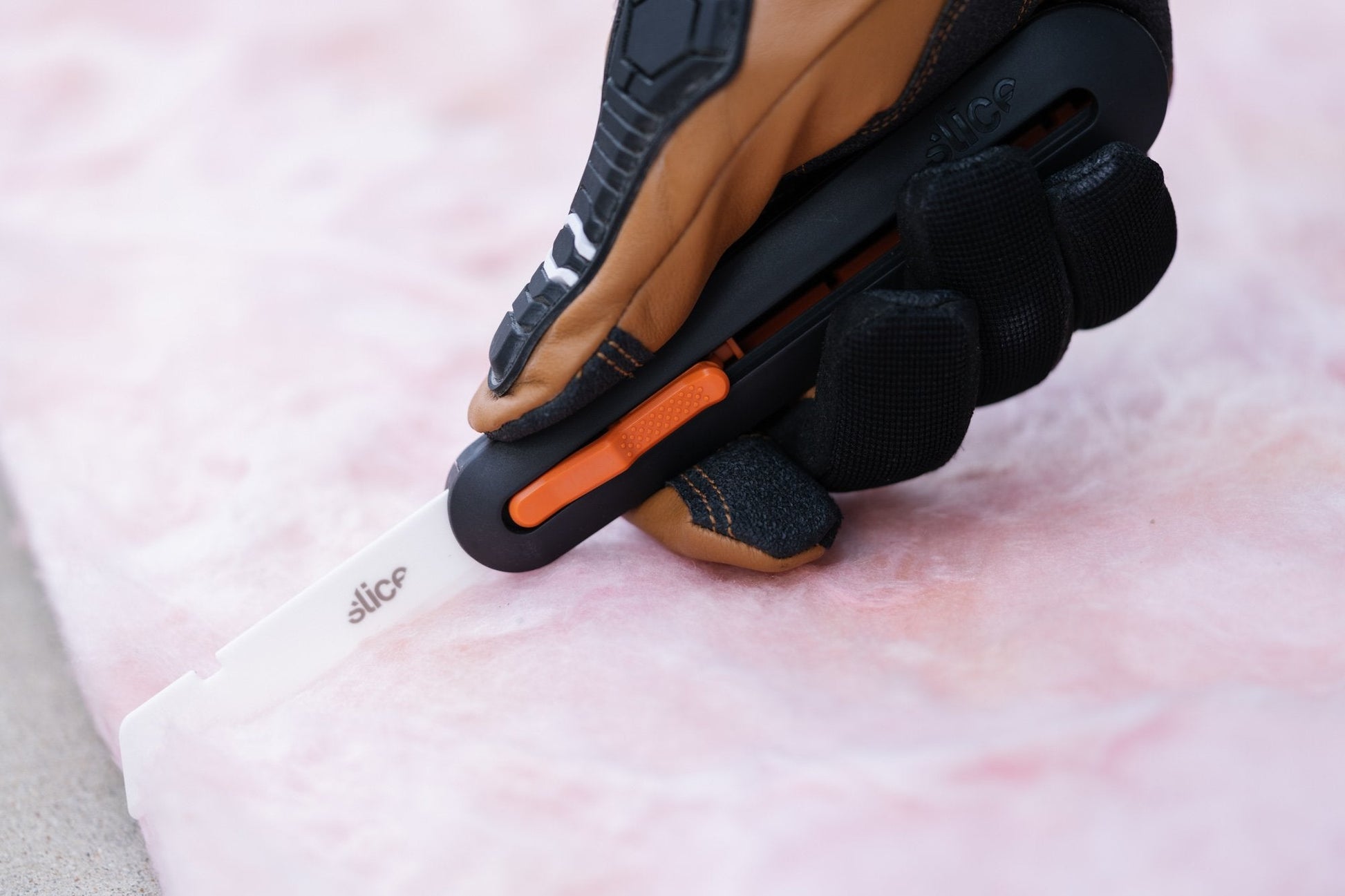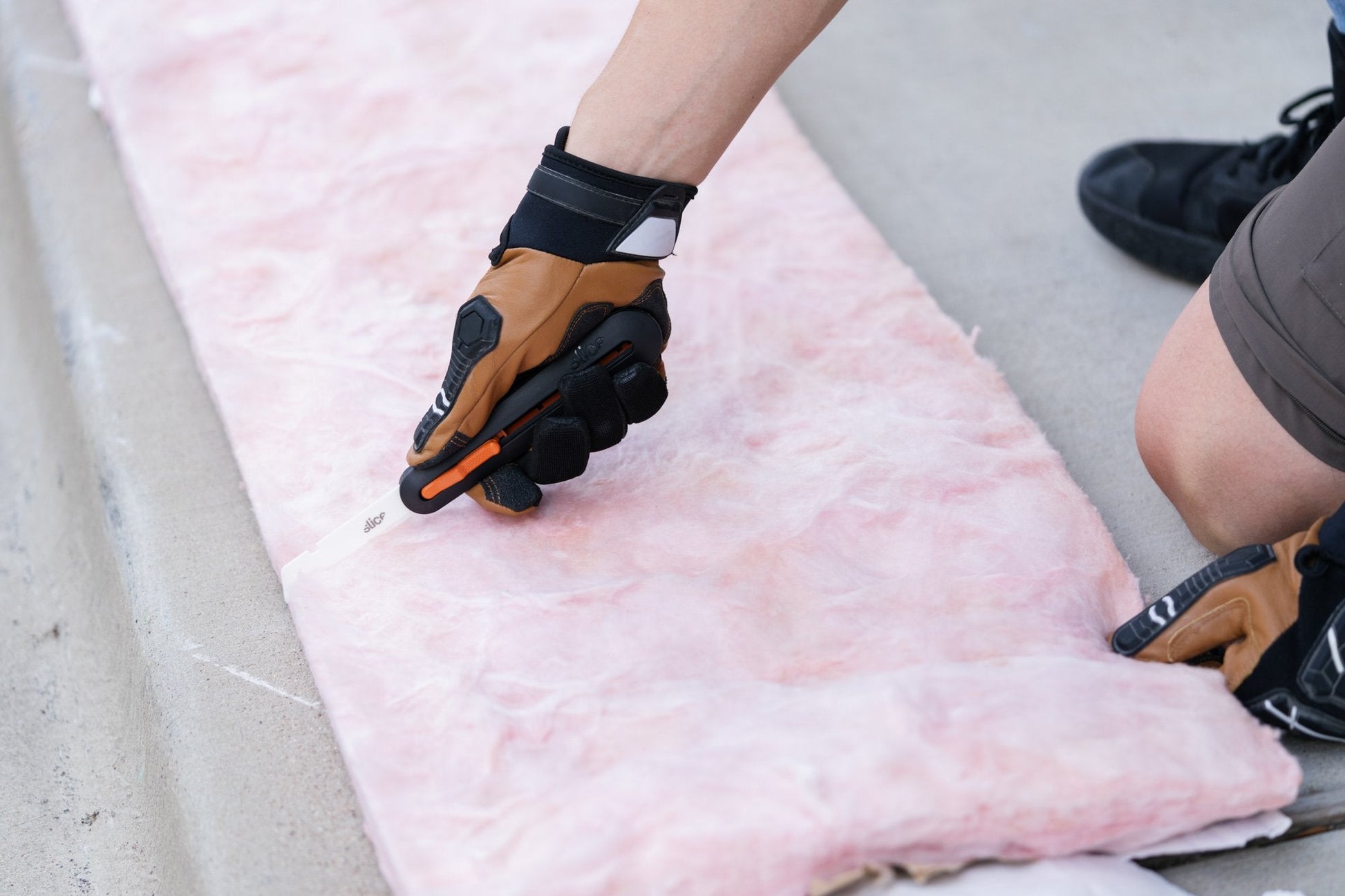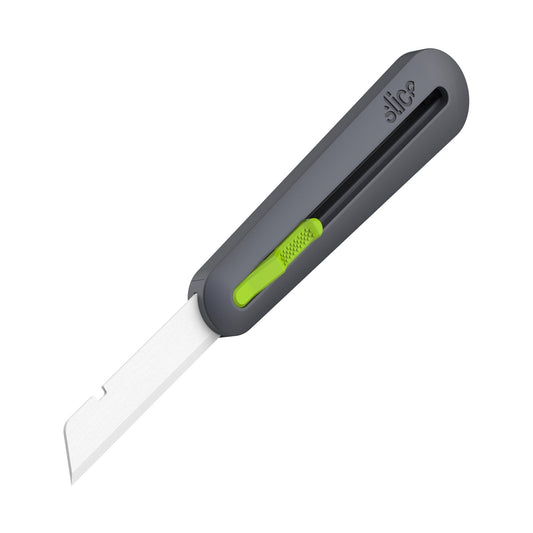SKU #10559
Manual Industrial Knife
Do you and your tools tire out before finishing that renovation project? Wasting time and money on constant blade replacements? Built to be extra durable and easy to use, the Slice® Manual Industrial Knife was made to last while keeping you safe.
This tool was designed to cut through thick materials like foam, batting, and fiberglass insulation quickly and efficiently and with far fewer blade changes. We know how much fiberglass can damage metal blades, so we created the Slice Manual Industrial Knife. The durable, five-position handle offers four cutting depths for multiple jobs around the production floor and in your home.
From total home renovations to projects in your workshop or attic, Slice makes people and places safer. Learn more below.
- Manual retraction with 4 cutting positions allows you to expose the blade at various lengths without having to hold it in the open position
- Extends up to 3 inches (76 mm)
- Made with 100% zirconium oxide blade that never rusts
- Blade lasts on average 11.2x longer than metal blades
- Easy-to-use ambidextrous design
Great for:
- Cutting thick materials like foam, batting, and fiberglass insulation
Product Specifications
Product Specifications
Cutting Depth:
Material: GFN, POM, stainless steel, carbon steel, zirconium oxide
Dimensions: L x W x H
Weight: 0.22 lb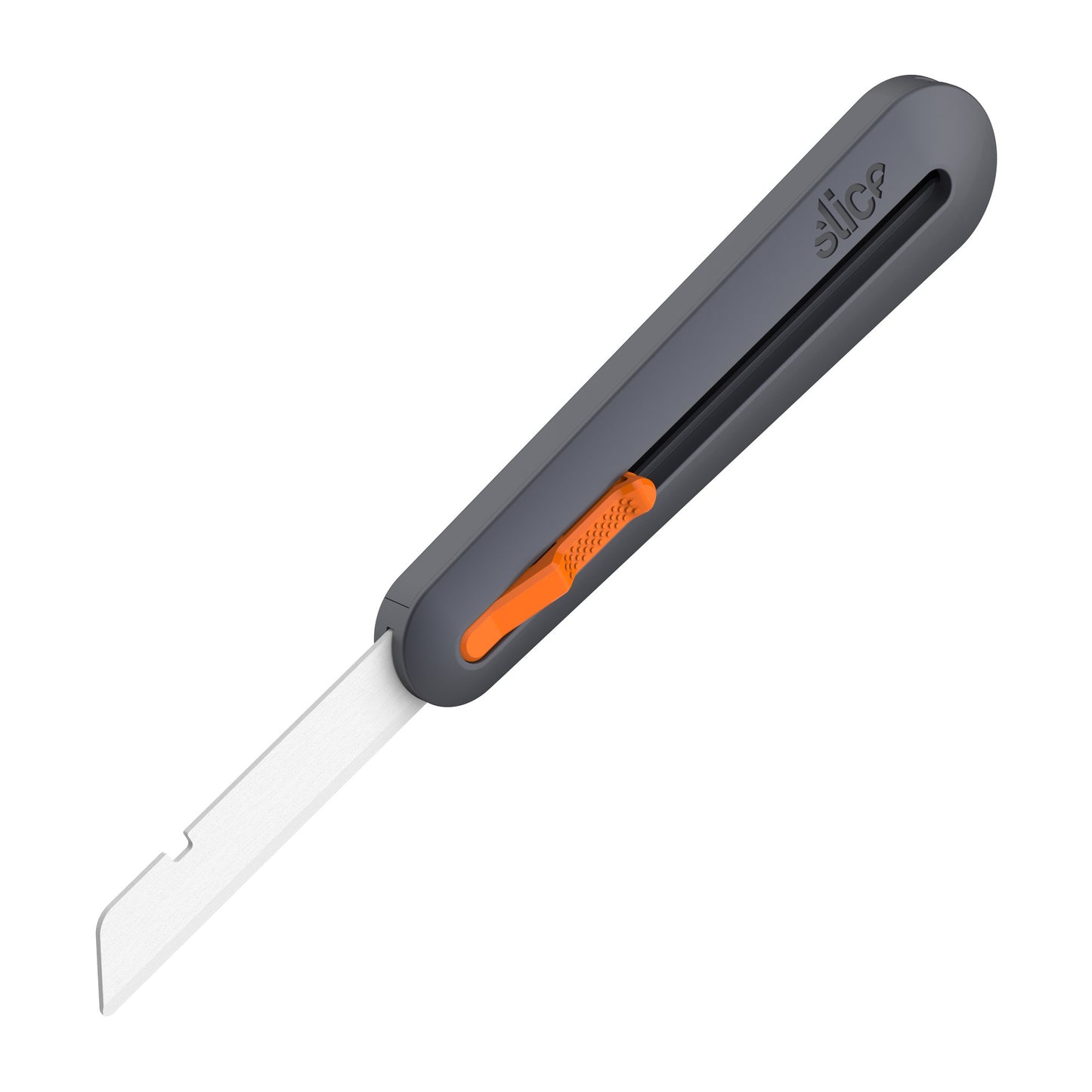
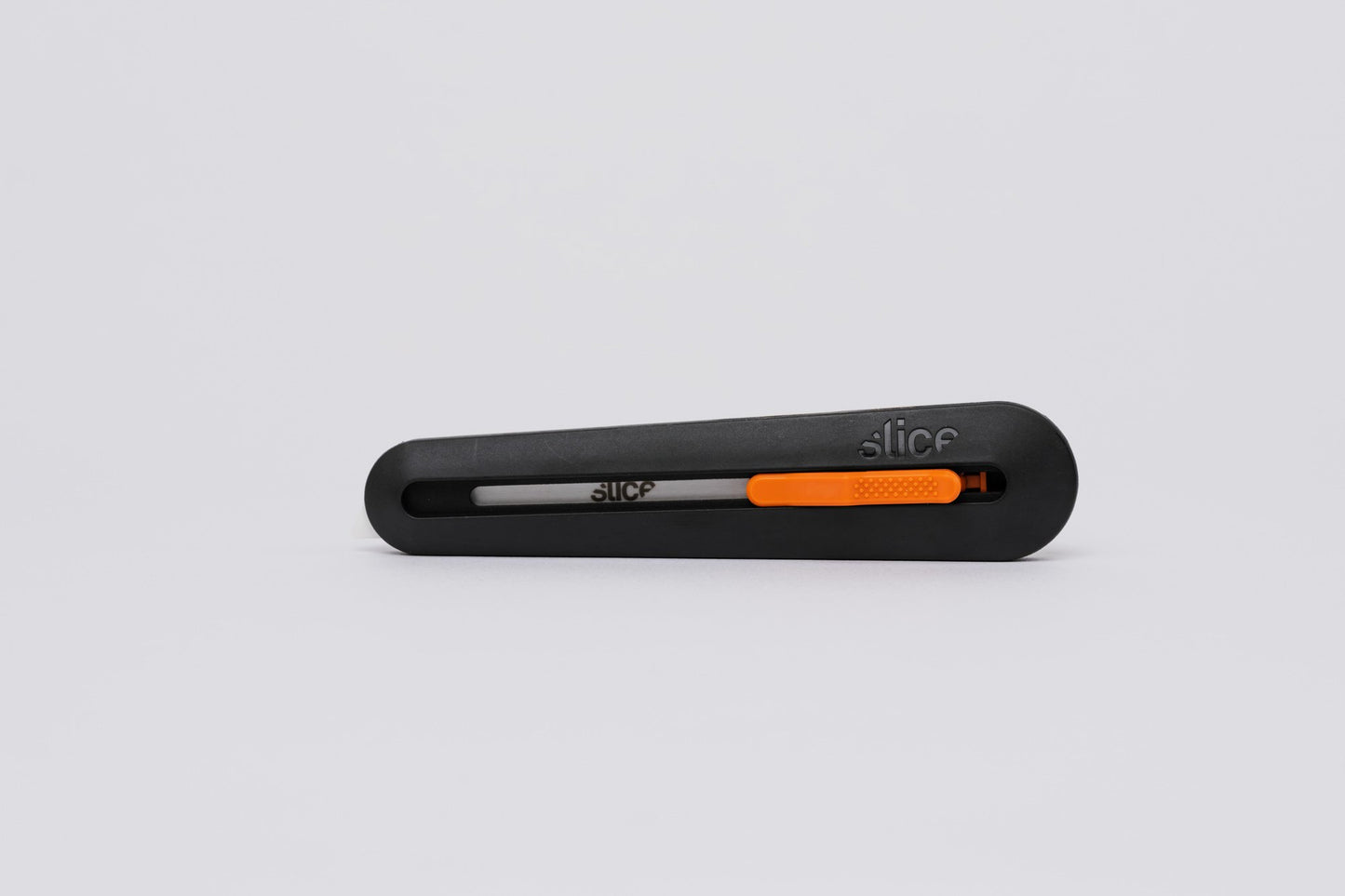
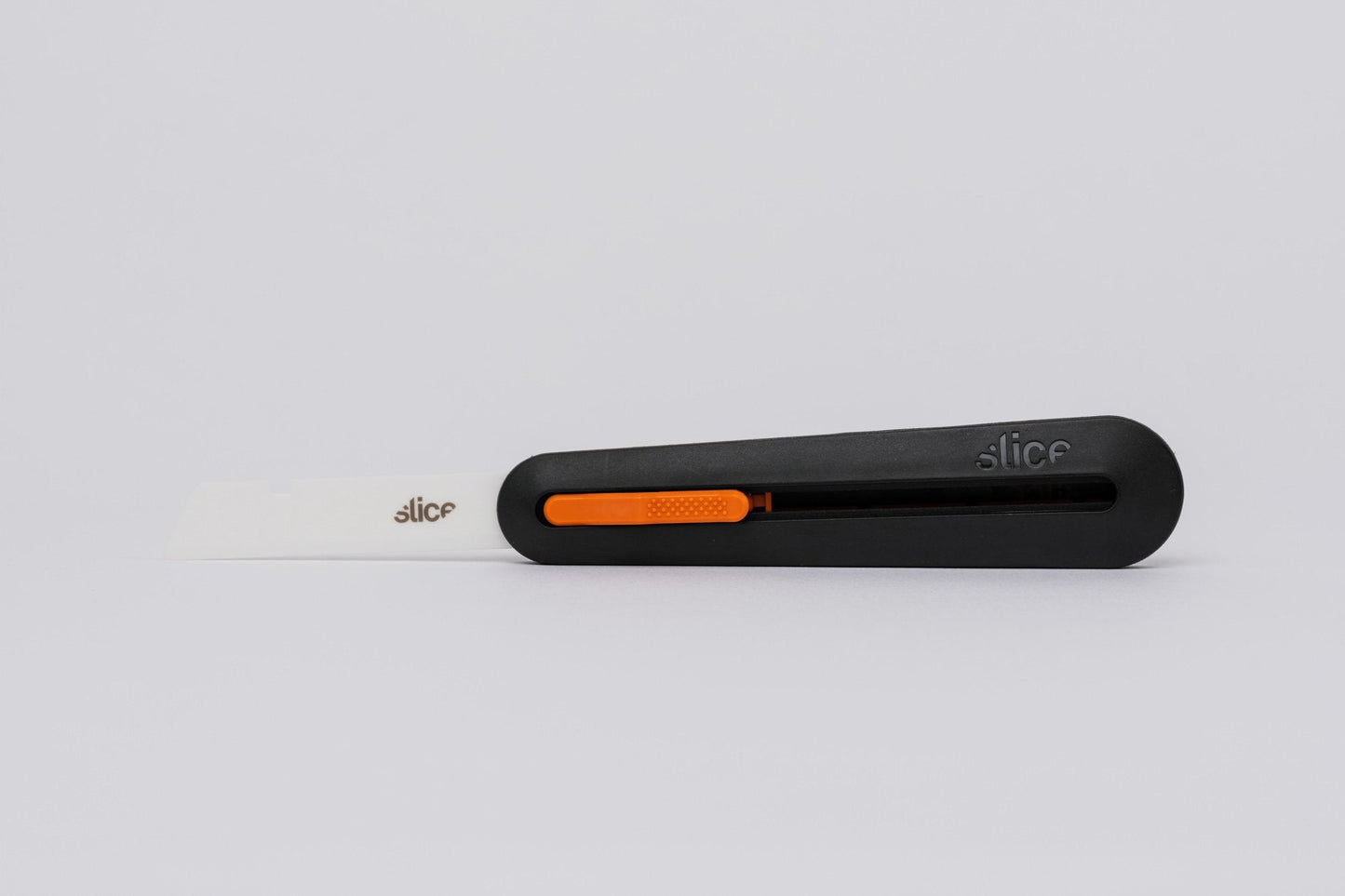
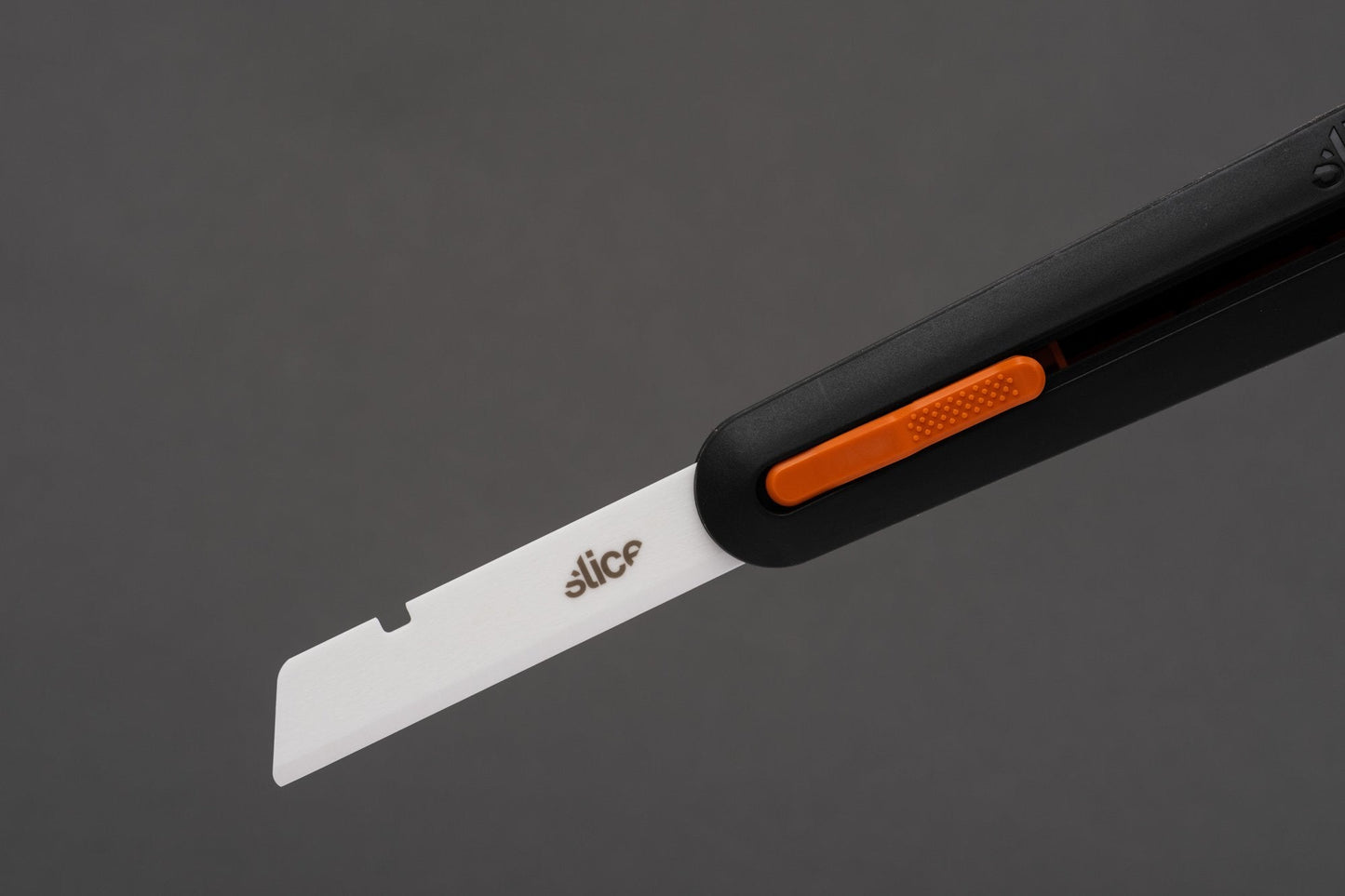
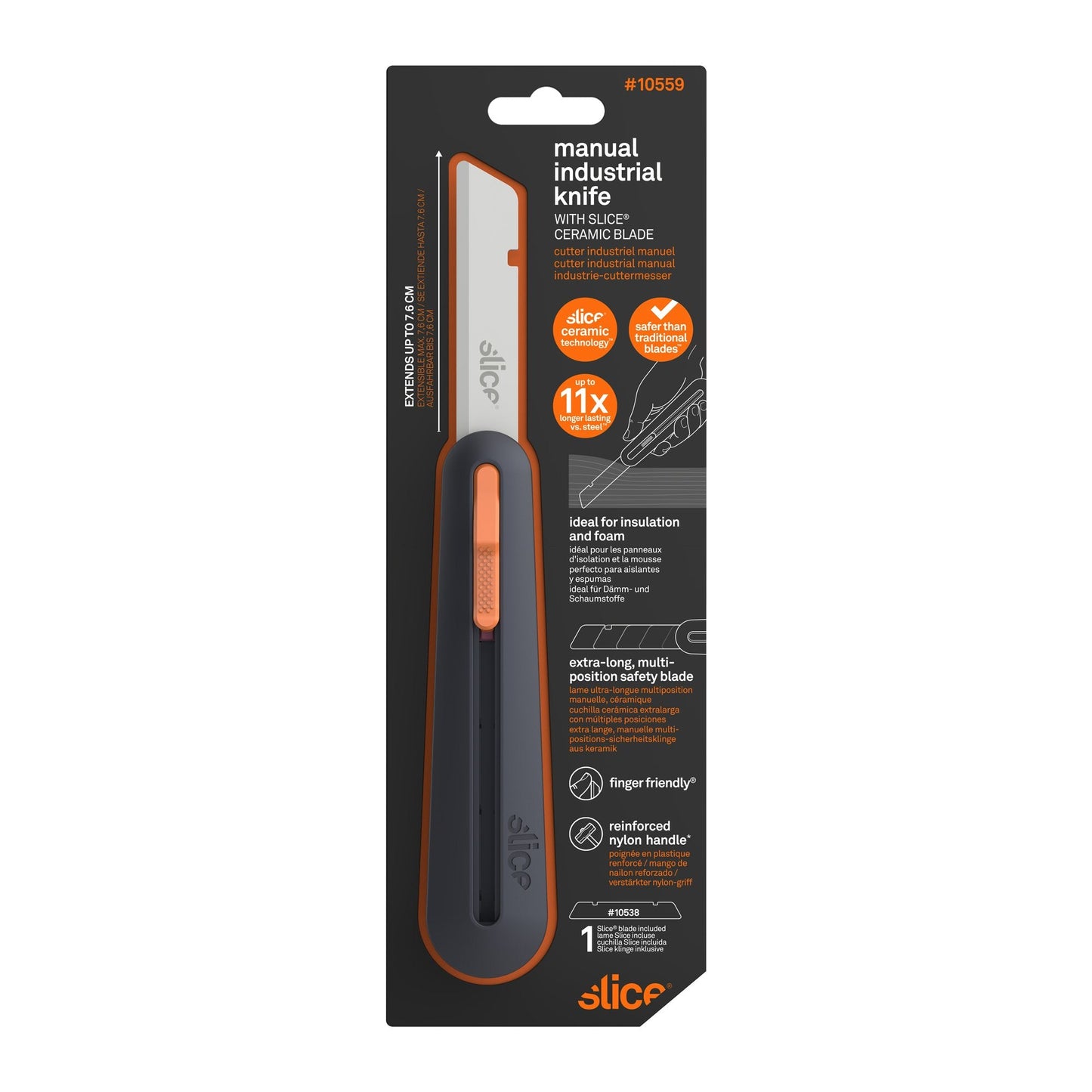
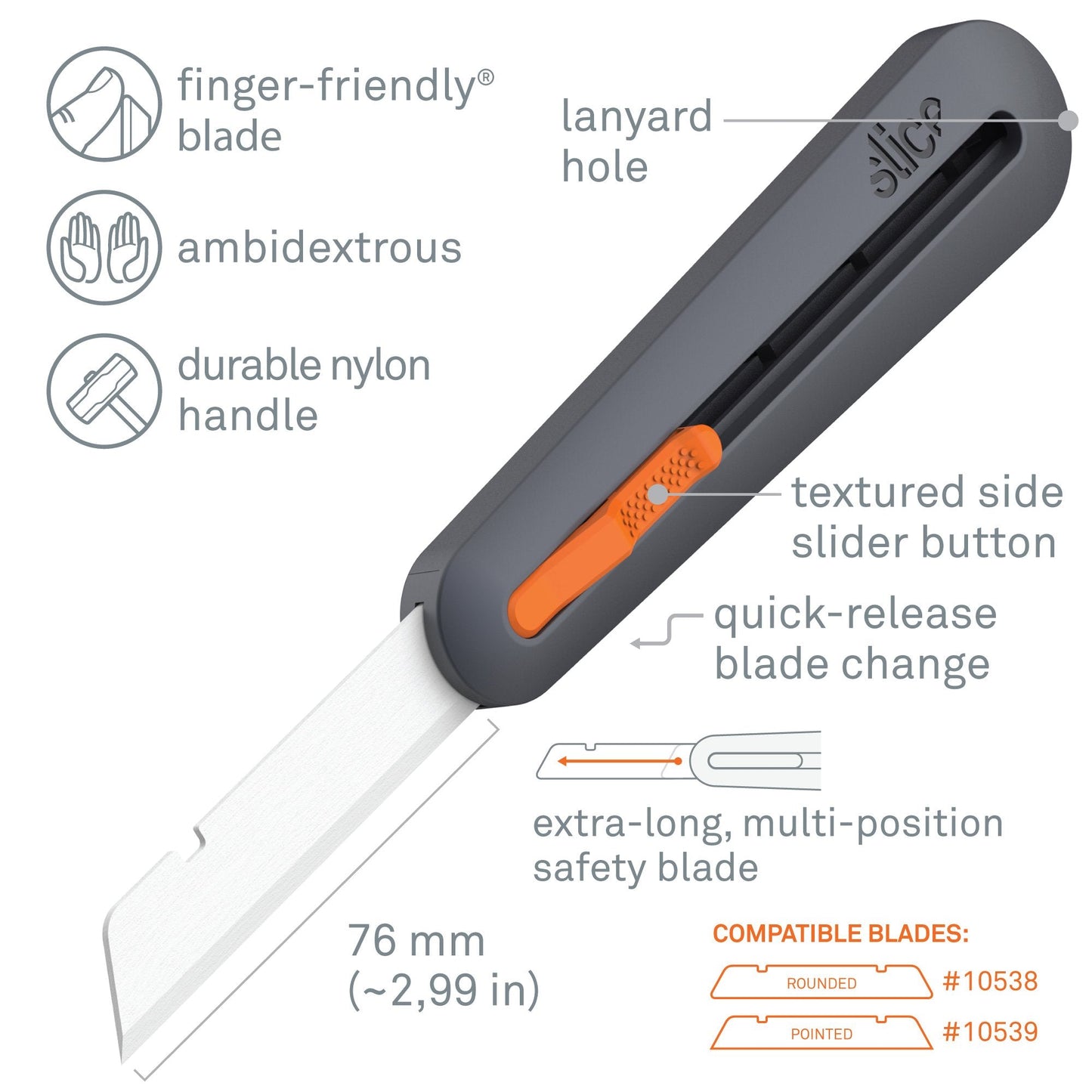
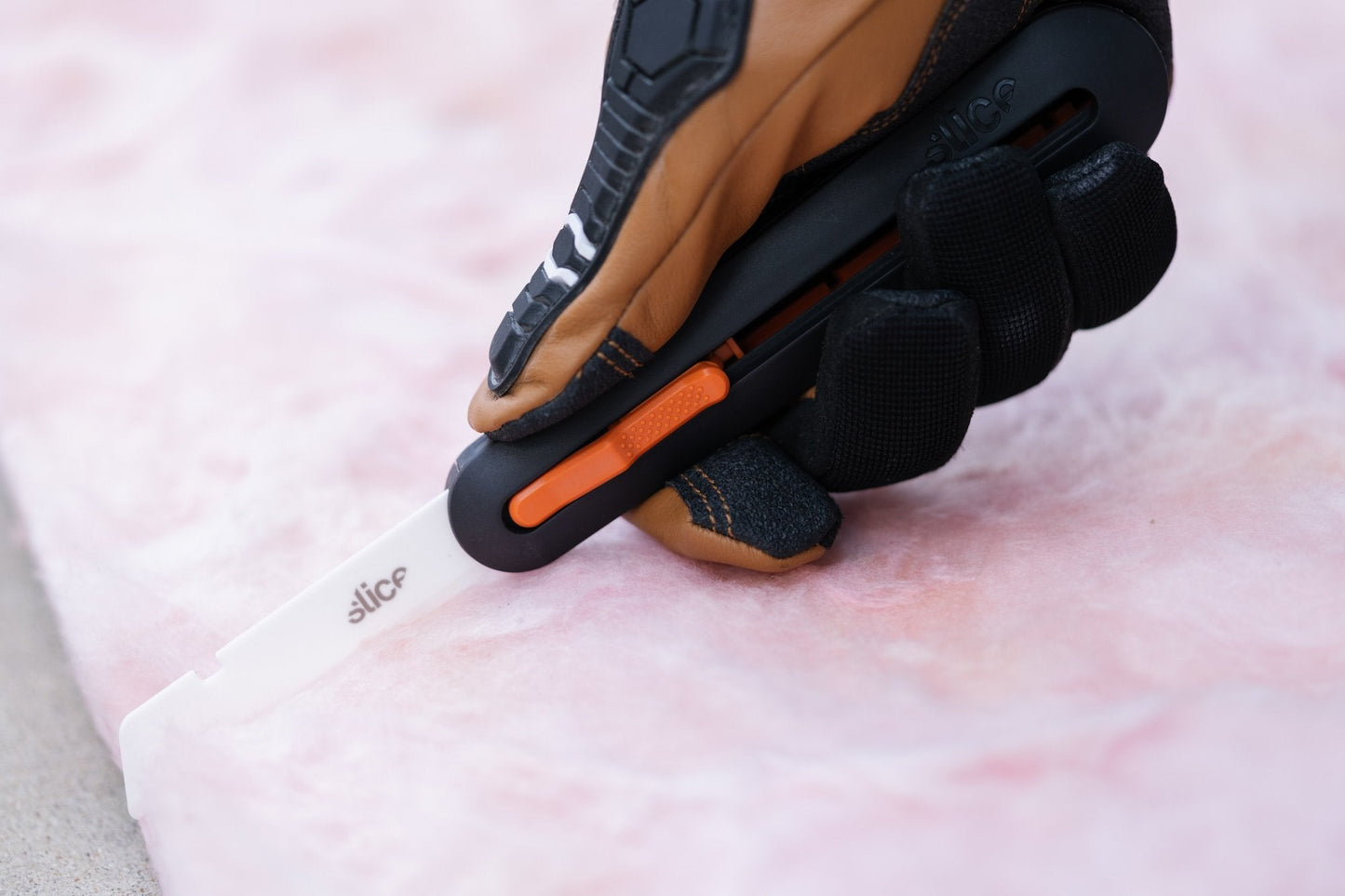
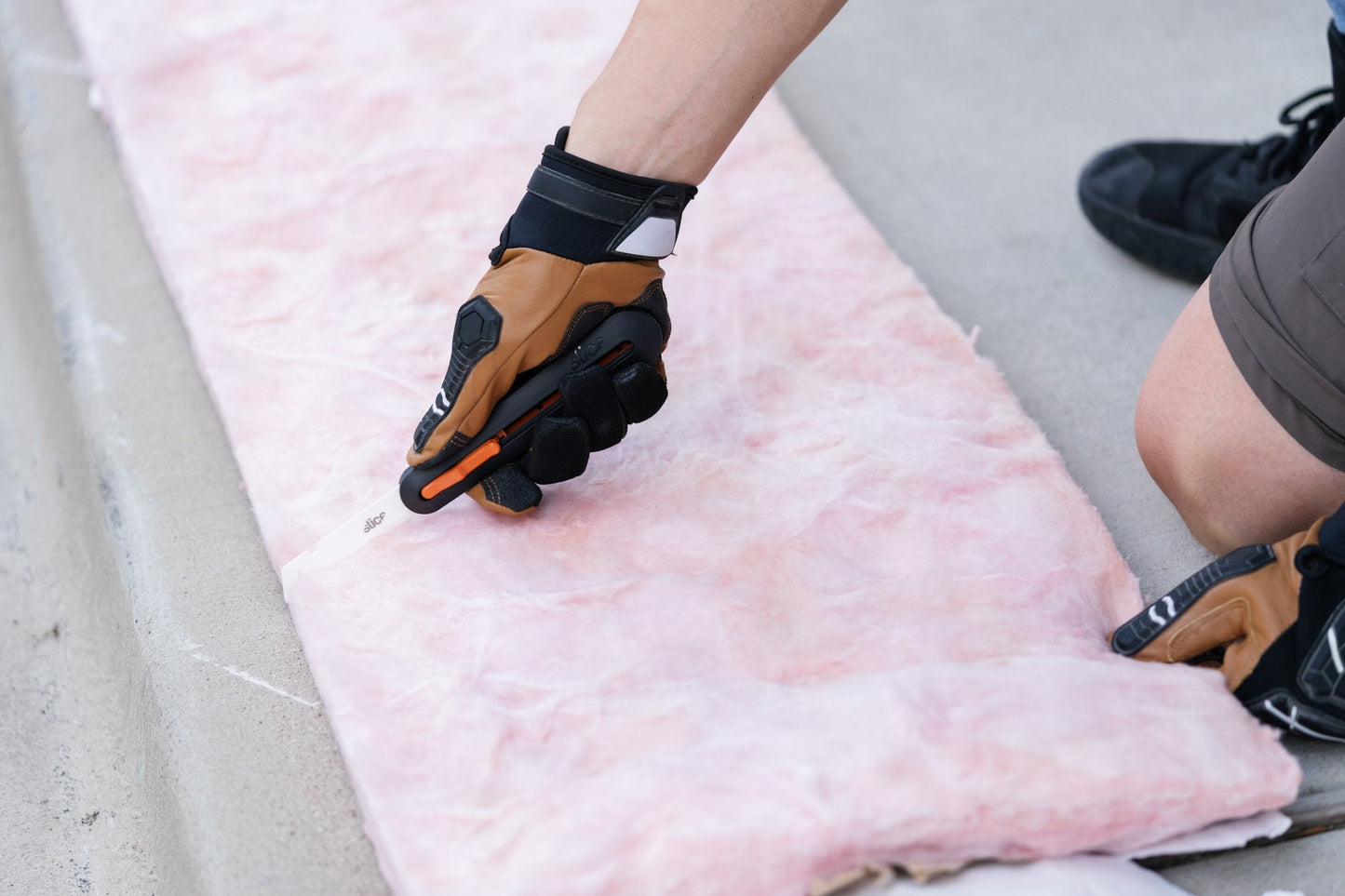
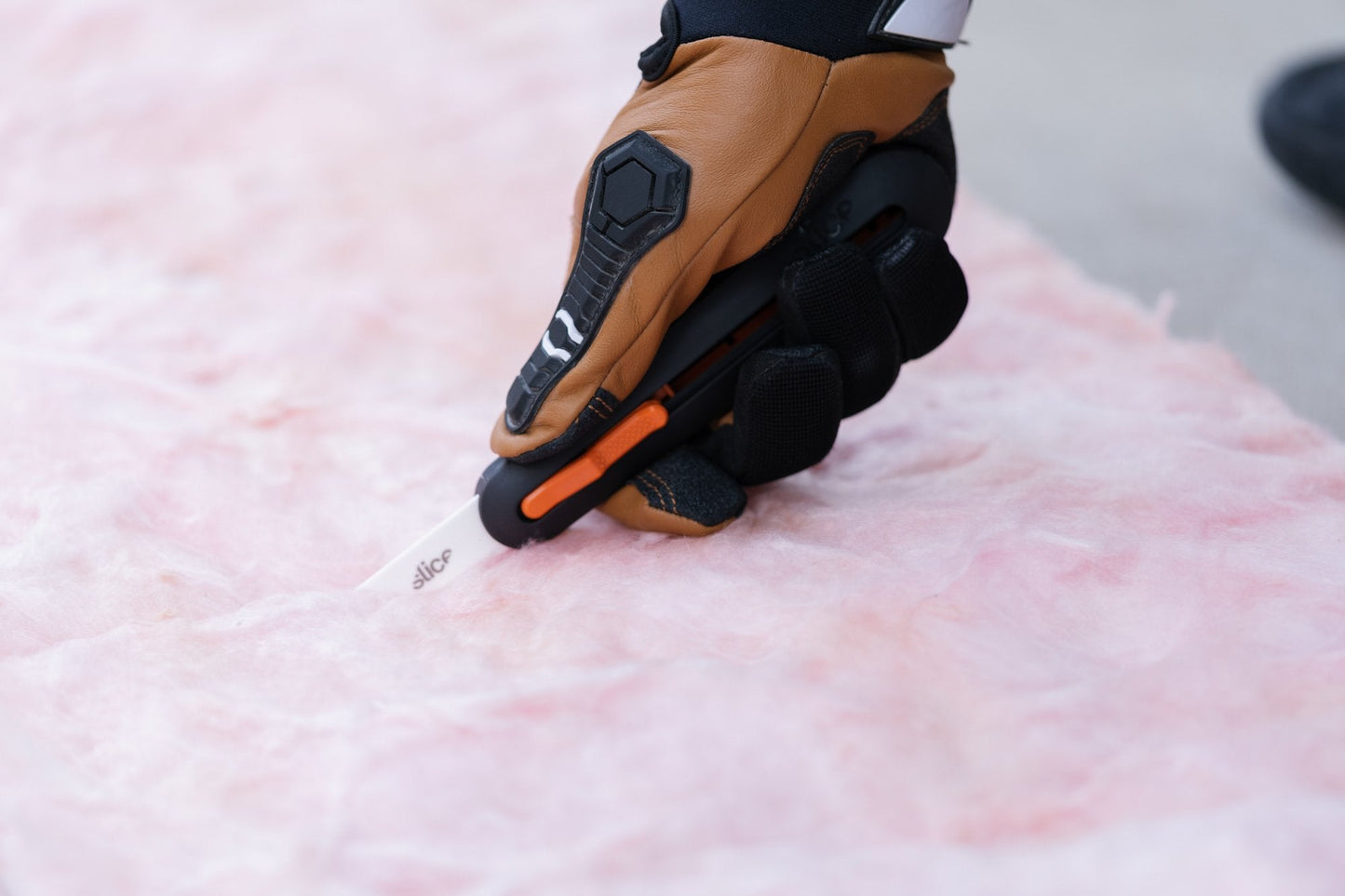
Videos
-
Manual Industrial Knife
-
Blade Replacement for Slice Industrial Knives
-
Cutting Fiberglass Insulation With Safe, Durable Tools
-
How to Cut Ceiling Tile: Safety First
-
How to Cut Ceramic Fiber Blanket With Slice
-
How to Cut Foam: Slice® Safety Blades vs. Traditional Blades
Related Products
FAQ
What Are Industrial Knives?
Are These the Only Knives You Make for Industrial Use?
The Slice® box cutters were originally designed to cut 98 percent of the corrugated on the market (double-walled corrugated). When manufacturers asked for a longer blade to deal with triple-walled corrugated and other, thicker, materials, we introduced our line of utility knives. Some manufacturers, especially those dealing with thick industrial foam components or insulation, needed an even longer blade, which is why we introduced our 10559 and 10560 knives.
What Makes the Slice Industrial Cutting Blades Different?
Slice reexamined advanced ceramics and the definition of effective sharpness and created a proprietary grind that results in a finger-friendly® blade. All our blades stand out from their competitors—metal and ceramic—because of our safety grind, which cuts materials effectively but is safer to touch.

